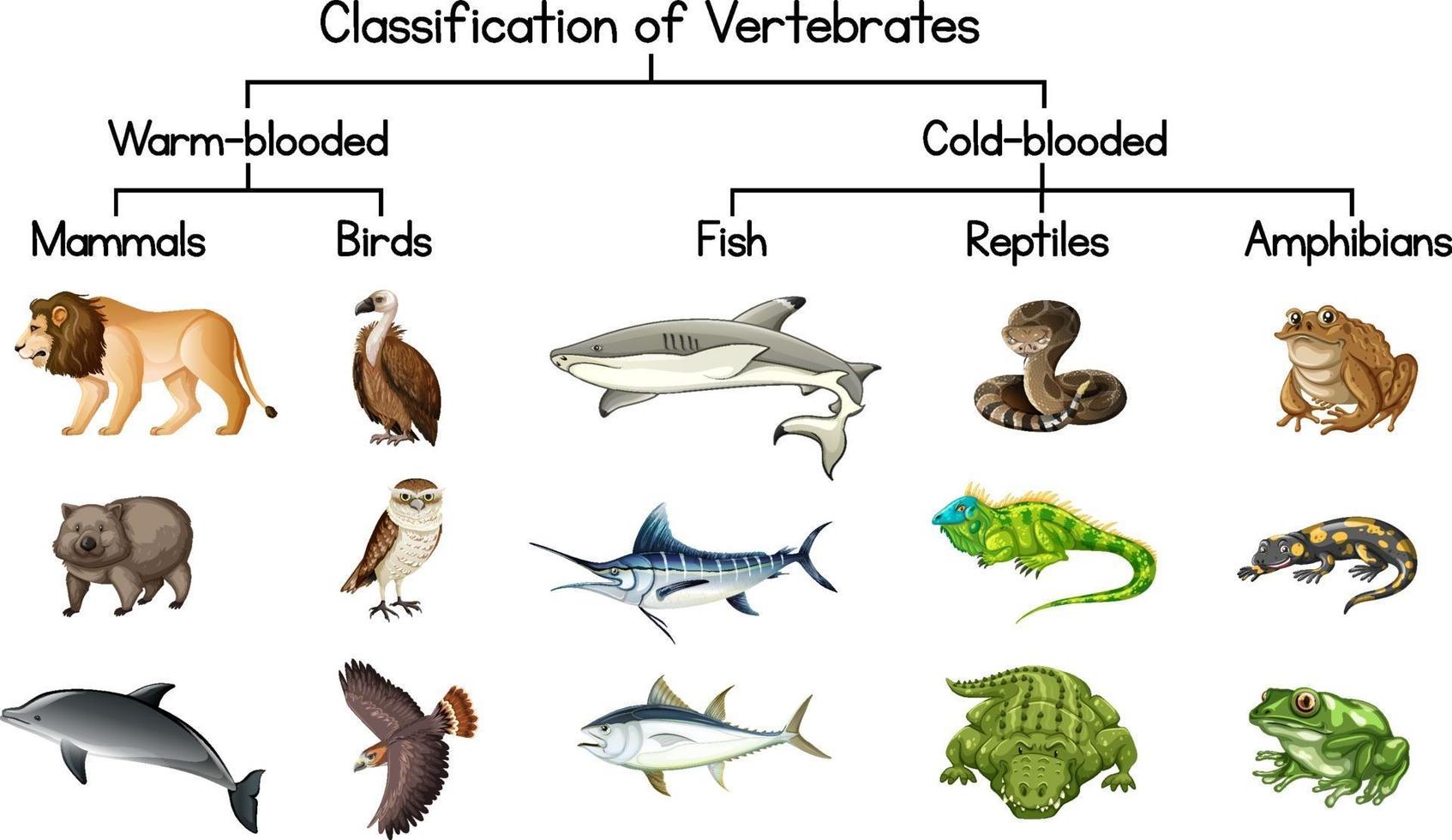
Vertebrate taxonomy is a fascinating field that delves into the classification and organization of animals with backbones. It is a crucial branch of biology that helps scientists understand the diversity and evolutionary relationships among different species. From fish to mammals, vertebrates encompass a wide range of organisms that have adapted to various habitats and lifestyles.
In this article, we will uncover 14 mind-blowing facts about vertebrate taxonomy that will leave you amazed. Whether you’re a biology enthusiast or simply curious about the natural world, these facts will showcase the incredible complexity and beauty of the animal kingdom. So, get ready to delve into the intricate world of vertebrate taxonomy and discover some unbelievable insights along the way.
Key Takeaways:
- Vertebrate taxonomy classifies animals with backbones, like mammals, birds, reptiles, amphibians, and fish, helping us understand their unique characteristics and evolutionary history.
- Understanding vertebrate taxonomy is crucial for conservation efforts and helps us appreciate the incredible diversity and wonder of the natural world.
Vertebrate taxonomy is the science of classifying animals with a backbone.
By studying the physical characteristics, genetic makeup, and evolutionary relationships of these animals, scientists can classify them into distinct groups and understand their place in the animal kingdom.
The system of vertebrate taxonomy was established by Carolus Linnaeus.
In the 18th century, Linnaeus devised a hierarchical system of classification, known as binomial nomenclature, which assigns each species a unique two-part scientific name.
There are five main classes of vertebrates.
These classes include mammals, birds, reptiles, amphibians, and fish. Each class exhibits unique characteristics and adaptations that distinguish them from one another.
Mammals are the only vertebrates that possess specialized glands, called mammary glands, which produce milk.
This distinguishing feature enables mammals to nourish their young and is a key characteristic used to classify them in the animal kingdom.
Birds are the only vertebrates that have feathers.
Feathers, which evolved from reptilian scales, provide birds with the ability to fly, maintain body temperature, and display exquisite and vibrant coloration.
Reptiles are ectothermic, meaning their body temperature is regulated by their environment.
This adaptation allows reptiles to thrive in a wide range of habitats, from scorching deserts to frigid oceans.
Amphibians undergo metamorphosis during their life cycle.
They start off as aquatic larvae with gills, then transform into terrestrial adults with lungs. This incredible transformation enables them to colonize both aquatic and terrestrial environments.
Fish comprise the largest class of vertebrates, with over 30,000 known species.
They occupy diverse aquatic habitats and exhibit a wide array of adaptations, such as gills for respiration and streamlined bodies for efficient swimming.
Vertebrates exhibit a remarkable range of reproductive strategies.
Some vertebrates, like fish, lay thousands of eggs at once, while others, like mammals, give birth to live young. This diversity of reproductive methods contributes to the incredible variety seen in the animal kingdom.
The study of vertebrate taxonomy has significant implications for conservation efforts.
By understanding the relationships and distribution of different vertebrate species, scientists can make informed decisions about habitat preservation and the protection of endangered animals.
DNA sequencing has revolutionized vertebrate taxonomy.
By comparing the genetic material of different species, scientists can gain insights into evolutionary relationships and refine the classification of vertebrates.
The discovery of new species continually expands our understanding of vertebrate taxonomy.
Exploration of remote locations and advancements in technology have led to the discovery of previously unknown species, enriching our knowledge of the incredible diversity within the vertebrate world.
Vertebrate taxonomy provides a framework for understanding the evolutionary history of life on Earth.
By studying the similarities and differences between vertebrates, scientists can trace the evolutionary pathways that have shaped the animal kingdom and unravel the mysteries of our own origins.
The field of vertebrate taxonomy is constantly evolving.
New discoveries, advancements in technology, and revisions in classification systems ensure that our understanding of vertebrates is always expanding and evolving alongside the natural world.
As we conclude our journey through these 14 unbelievable facts about vertebrate taxonomy, we are reminded of the immense complexity and wonder of the natural world. The study of vertebrates and their classification not only helps us understand our place within the animal kingdom but also highlights the need for conservation and preservation of the incredible biodiversity that surrounds us.
Conclusion
In conclusion, the field of vertebrate taxonomy is a fascinating area of study that continues to unveil new discoveries and insights into the diversity and evolution of vertebrate species. From the classification system developed by Carl Linnaeus to the ongoing advancements in molecular techniques, researchers have made significant progress in understanding the relationships and characteristics of vertebrates.Through this article, we have explored 14 unbelievable facts about vertebrate taxonomy. We learned about the complexity of the classification system, the remarkable adaptations of different vertebrate groups, and the impact of taxonomy on conservation efforts. From the incredible ability of amphibians to regenerate limbs to the fascinating diversity of bird feathers, these facts highlight the wonders of the animal kingdom.As our understanding of vertebrate taxonomy continues to evolve, we can look forward to even more exciting discoveries in the future. By unraveling the mysteries of the past and present, this field of study plays a crucial role in our efforts to protect and conserve the rich biodiversity of our planet.
FAQs
1. What is vertebrate taxonomy?
Vertebrate taxonomy is the branch of biology that focuses on the classification, naming, and categorization of vertebrate species. It involves the identification of similarities and differences between organisms and the organization of their relationships into a hierarchical system.
2. Why is taxonomy important in biology?
Taxonomy is important in biology because it provides a standardized framework for understanding and organizing the diversity of life. It helps scientists to identify and classify species, study their evolutionary relationships, and make informed decisions regarding conservation and ecological management.
3. How do scientists classify vertebrates?
Scientists classify vertebrates based on a range of characteristics, including anatomical features, genetic information, and evolutionary relationships. They use a hierarchical system that starts with broad categories, such as phylum and class, and narrows down to more specific groups, such as genus and species.
4. What are some unique adaptations of vertebrates?
Vertebrates display a wide range of unique adaptations. Some examples include the ability of reptiles to lay amniotic eggs, the echolocation skills of bats and dolphins, and the ability of birds to fly. These adaptations have allowed vertebrates to thrive in diverse environments and occupy various ecological niches.
5. How does vertebrate taxonomy contribute to conservation efforts?
Vertebrate taxonomy plays a crucial role in conservation efforts by providing scientists with information about species diversity and distribution. By understanding the relationships between different species, conservationists can make informed decisions regarding habitat protection, management strategies, and the identification of endangered or threatened species.
Vertebrate taxonomy is just the beginning of a fascinating journey into the world of biological classification. Curious about the differences between ravens and crows? Dive into the field of ornithology to learn more. Want to explore the evolutionary relationships among organisms? Uncover mind-blowing facts about phylogenetics. Interested in the principles and methods of classifying living things? Discover the wonders of systematics. Keep learning, and you'll be amazed by the incredible diversity and complexity of life on Earth.
Was this page helpful?
Our commitment to delivering trustworthy and engaging content is at the heart of what we do. Each fact on our site is contributed by real users like you, bringing a wealth of diverse insights and information. To ensure the highest standards of accuracy and reliability, our dedicated editors meticulously review each submission. This process guarantees that the facts we share are not only fascinating but also credible. Trust in our commitment to quality and authenticity as you explore and learn with us.


